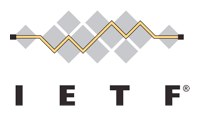 Wow! IETF 89 next week in London is going to be an extremely busy week for those of us interested in DNSSEC, DANE and DNS security in general. As I explained in a post today, “Rough Guide to IETF 89: DNSSEC, DANE and DNS Security“, there are 5 new working groups and BOFs related to DNS and DNSSEC in addition to the three already existing working groups.
Wow! IETF 89 next week in London is going to be an extremely busy week for those of us interested in DNSSEC, DANE and DNS security in general. As I explained in a post today, “Rough Guide to IETF 89: DNSSEC, DANE and DNS Security“, there are 5 new working groups and BOFs related to DNS and DNSSEC in addition to the three already existing working groups.
I go into a great bit of detail in the Rough Guide blog post, but here are the quick summaries of what is happening this week:
- The DANE Working Group is focused on how to use the DANE protocol to add more security to TLS/SSL connections. The DANE WG agenda at IETF 89 is about using DANE with email and IM, operational guidance and much more.
- The DNS Operations (DNSOP) Working Group has a very full agenda with the biggest DNSSEC-related piece being the drafts around how to deal with the critical issue of the uploading of DS records from DNS operators to registries. Some other great DNSSEC work being discussed there, too.
- The brand new Using TLS in Applications (UTA) Working Group that has as a primary goal to deliver a set of documents that are “go to” security guides aimed at helping developers add TLS support into their applications. We’re interested in the potential DNSSEC/DANE connection there.
- The new Public Notary Transparency (trans) Working Group on Wednesday that is looking at how to update the experimental RFC 6962, “Certificate Transparency”, to reflect recent implementation and deployment experience. Our particular interest is that part of the charter is to ensure that this mechanism can work in the presence of DANE records in addition to regular web certificate-based system.
- The new EPP Extensions (eppext) working group that is focused is looking at draft-ietf-eppext-keyrelay that defines a mechanism that can be used to securely transfer a DNSSEC-signed domain from one operator to another.
- The “Encryption of DNS requests for confidentiality” (DNSE) BOF is exploring how to protect the confidentiality of DNS requests from sniffing. The DNSE BOF will use draft-bortzmeyer-dnsop-dns-privacy and draft-koch-perpass-dns-confidentiality as starting points for discussion.
- The Domain Boundaries (dbound) BOF is looking at how domain names are used in setting security policies. Our interest is in understanding how this may fit into the other DNS security components of the work we are doing such as DNSSEC and DANE.
- The Extensions for Scalable DNS Service Discovery (dnssd) Working Group is continuing their discussions about how DNS-SD (RFC6763) and mDNS (RFC6762) can be used beyond the local network. Our interest is in how this all gets done securely.
We will finish out the week with a breakfast meeting Friday morning with people involved in the DNSSEC Coordination effort (and anyone can join the mailing list) where we’ll have some conversation and food before heading off to the DNSOP and/or UTA working groups.
It’s going to be a crazy-busy week… but I’m looking forward to seeing all that we can get done!
Relevant Working Groups and BoFs
dnssd (Extensions for Scalable DNS Service Discovery) WG
Monday, March 3, 2014, 1300-1500 UTC, Sovereign Room
Agenda: https://datatracker.ietf.org/meeting/89/agenda/dnssd/
Documents: https://datatracker.ietf.org/wg/dnssd/
Charter: https://datatracker.ietf.org/wg/dnssd/charter/
dnse (Encryption of DNS request for confidentiality) BOF
Tuesday, March 4, 2014, 1420-1550 UTC, Viscount Room
Agenda: https://datatracker.ietf.org/meeting/89/agenda/dnse/
List of BOFs: http://trac.tools.ietf.org/bof/trac/
trans (Public Notary Transparency) WG
Wednesday, March 5, 2014, 1520-1620 UTC, Blenheim Room
Agenda: https://datatracker.ietf.org/meeting/89/agenda/trans/
Documents: https://datatracker.ietf.org/wg/trans/
Charter: https://datatracker.ietf.org/wg/trans/charter/
dane (DNS-based Authentication of Named Entities) WG
Thursday, March 6, 2014, 0900-1130 UTC, Park Suite
Agenda: https://datatracker.ietf.org/meeting/89/agenda/dane/
Documents: https://datatracker.ietf.org/wg/dane/
Charter: http://datatracker.ietf.org/wg/dane/charter/
dbound (Domain Boundaries) BOF
Thursday, March 6, 2014, 1520-1650 UTC, Blenheim Room
Agenda: https://datatracker.ietf.org/meeting/89/agenda/dbound/
List of BOFs: http://trac.tools.ietf.org/bof/trac/
eppext (Extensible Provisioning Protocol Extensions) WG
Thursday, March 6, 2014, 1700-1830 UTC, Park Suite
Agenda: https://datatracker.ietf.org/meeting/89/agenda/eppext/
Documents: https://datatracker.ietf.org/wg/eppext/
Charter: http://tools.ietf.org/wg/eppext/charter/
dnsop (DNS Operations) WG
Friday, March 7, 2014, 0900-1130 UTC, Sovereign Room
Agenda: https://datatracker.ietf.org/meeting/89/agenda/dnsop/
Documents: https://datatracker.ietf.org/wg/dnsop/
Charter: http://tools.ietf.org/wg/dnsop/charter/
uta (Using TLS in Applications) WG
Friday, March 7, 2014, 0900-1130 UTC, Richmond/Chelsea/Tower Rooms
Agenda: https://datatracker.ietf.org/meeting/89/agenda/uta/
Documents: https://datatracker.ietf.org/wg/uta/
Charter: http://tools.ietf.org/wg/uta/charter/
Remote Participation
You don’t have to be in London to participate in the meetings of IETF 89. You can also:
- Listen to live audio streams.
- Participate in Jabber chat rooms to ask questions.
- Download the slides planned for each session.
- Listen and watch “Meetecho” conferencing sessions that provide an integrated view of slides, audio, chat and video.
Information about how to participate can be found on the IETF 89 Remote Participation page. Keep in mind that times for London are in UTC.











